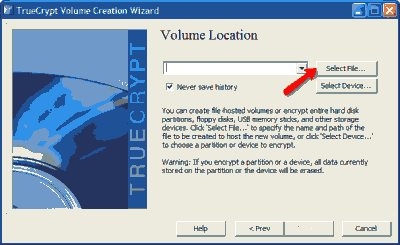
- #Using truecrypt mac os x
- #Using truecrypt install
- #Using truecrypt code
- #Using truecrypt password
- #Using truecrypt free
#Using truecrypt password
Remember the password that you have entered in Once you have set your password, and selected the "Use.Selecting to use keyfiles will allow you to store securely the keyfiles to yourįigure 6: Enter your password and select the "Use keyfiles" option Enter your desired password and select the "Use keyfiles" check box. (optionally) for the Keyfile that will be used to encrypt/decrypt your TrueCrypt Next, you will be asked for the Volume Password and.The size that you specify here will be the allocated space for the file thatįigure 5: Specify the size you want for your volume. Next, you will be asked on the desired size for your volume.Ĭlick "Next" once you have specified the desired size for your Volume.You can leave the default settings as it is and click "Next" Next, you will be asked on the "Encryption Options" for your.Select "Next" once you have selected theįigure 4: TrueCrypt Volume Creation Wizard, Volume Location selection. In which you want to create your TrueCrypt Volume. In the " Volume Location" selection, Select the file.TrueCrypt volume" option and click "Next". In the " Volume Type" selection, click the "Standard.In the Volume Creation Wizard, select the "Create an encrypted.The "TrueCrypt Volume Creation Wizard" should pop-up ( Figureįigure 3: TrueCrypt Volume Creation Wizard.On the TrueCrypt main window, click the "Create Volume"."OK" button on the "Securty Token Preferences" dialog.Īfter you have successfully set-up your TrueCrypt settings,įollow the steps below to create an encrypted volume using ACOS5/Cryptomate. Once you have selected the proper PKCS#11 Library, click the." buttonĪnd navigate to the Program Files, Advanced Card Systems Ltd., thenĪCOS5 SDK, Middleware and finally the PKCS folder. PKCS Library installed in the system, then click "Select Library. Click the button "Auto-Detect Library".

The "TrueCrypt - Securty Token Preferences" should pop upįigure 2: Security Token Preferences window.

In the TrueCrypt main menu, select "Settings" and click.
#Using truecrypt install
#Using truecrypt mac os x
It supports Microsoft Windows, Mac OS X and Linux (using FUSE) and encrypted volumes can be made portable ( Figure 1).ĪCOS5/CryptoMate can be used as the storage for key(s) that will be used inĮncrypting/Decrypting of a TrueCrypt Volume. It can create a virtual encrypted disk within a file or a device-hosted encrypted volume on either an individual partition or an entire storage device.
#Using truecrypt code
It is distributed without cost, and has source code available, although under a restrictive licence. TrueCrypt is a software application used for real-time on-the-fly encryption. TrueCrypt will open an explorer window and beep mounting will be automatic: truecrypt /v myvolume.Using ACOS5/CryptoMate in TrueCrypt Using ACOS5/CryptoMate in TrueCrypt

Mount a volume called myvolume.tc using the password MyPassword, as the drive letter X.
#Using truecrypt free
Mount the volume d:\myvolume as the first free drive letter, using the password prompt (the main program window will not be displayed): truecrypt /q /v d:\myvolumeĭismount a volume mounted as the drive letter X (the main program window will not be displayed): truecrypt /q /dx Note that the order in which options are specified does not matter. You can also mount a partition or dynamic volume using its volume name (for example,

To mount a partition/device-hosted volume, use, for example, /v \Device\Harddisk1\Partition3 (to determine the path to a partition/device, run TrueCrypt and click Select Device). For information on command line usage applying to the Linux and Mac OS X versions, please run: truecrypt –h /help or /?įile and path name of a TrueCrypt volume to mount (do not use when dismounting). Note that this section applies to the Windows version of TrueCrypt.


 0 kommentar(er)
0 kommentar(er)
